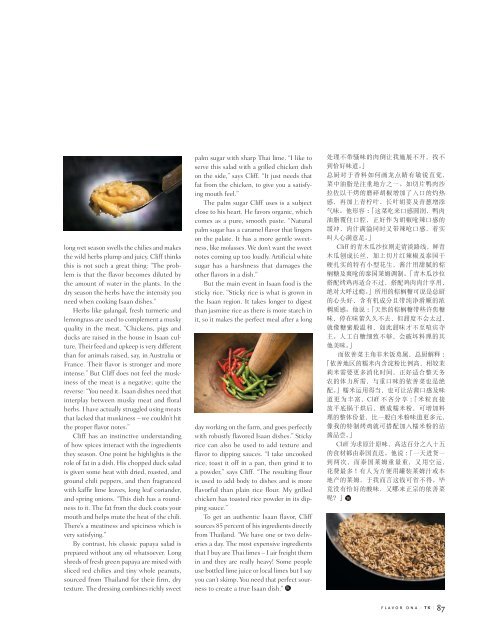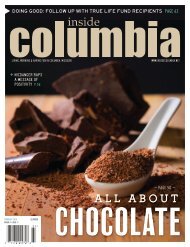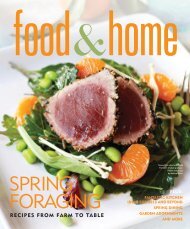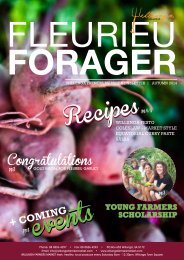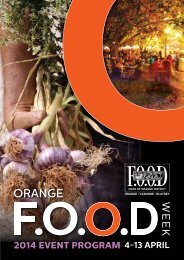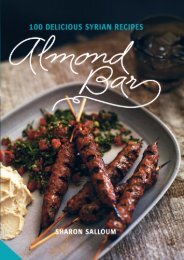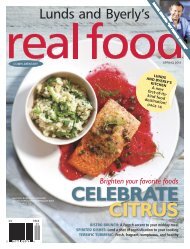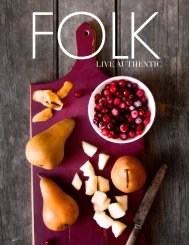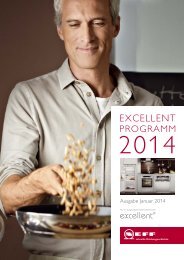Tasting Kitchen
Welcome to Tasting Kitchen. Season’s Greetings – or should I say Seasonings Greetings! This holiday TK issue is full of spices and flavorings. We talk to four talented and ambitious chefs about the flavor profile – or Flavor DNA – of dishes from India, Sichuan, Vietnam and the Isaan region of Thailand. Think cardamom, black salt and saffron, red peppercorns, red chilies and green chilies, dill, Kaffir lime, lemongrass, coriander, galangal and turmeric. We take a look at spices in history, and how even back in the Middle Ages savvy marketers knew the value of a good story. Spice merchants claimed that birds used cinnamon sticks to make giant nests in the cliffs above beaches in India, which “cinnamon hunters” then plotted to obtain. Today India is still associated with the world’s best spices. In this issue, for our first Tasting Destinations feature, TK’s Director of Photography David Hartung and Senior Writer Lucy Morgan traveled to Old Delhi to visit the world’s largest spice market and to New Delhi to visit one of the world’s top restaurants for modern Indian cuisine. One of our featured wines is the peppery Austrian Grüner Veltliner. We also talk to a New Zealand Wine Master about what makes great wine great, and to a leading French Champagne Chef de Cave about the value of patience and restraint. There are also some crabs running loose in the issue. A master chef in Macau shares his recipe for Quinoa Lobster Salad while five more from Hong Kong and Singapore share their favorite crab dishes and culinary musings. Happy Holidays,
Welcome to Tasting Kitchen.
Season’s Greetings – or should I say
Seasonings Greetings!
This holiday TK issue is full of spices and
flavorings.
We talk to four talented and ambitious
chefs about the flavor profile – or Flavor DNA
– of dishes from India, Sichuan, Vietnam and
the Isaan region of Thailand. Think cardamom,
black salt and saffron, red peppercorns, red
chilies and green chilies, dill, Kaffir lime,
lemongrass, coriander, galangal and turmeric.
We take a look at spices in history, and
how even back in the Middle Ages savvy marketers knew the value of a good story.
Spice merchants claimed that birds used cinnamon sticks to make giant nests in the
cliffs above beaches in India, which “cinnamon hunters” then plotted to obtain.
Today India is still associated with the world’s best spices. In this issue, for
our first Tasting Destinations feature, TK’s Director of Photography David Hartung
and Senior Writer Lucy Morgan traveled to Old Delhi to visit the world’s largest
spice market and to New Delhi to visit one of the world’s top restaurants for modern
Indian cuisine.
One of our featured wines is the peppery Austrian Grüner Veltliner. We also
talk to a New Zealand Wine Master about what makes great wine great, and to a
leading French Champagne Chef de Cave about the value of patience and restraint.
There are also some crabs running loose in the issue. A master chef in Macau
shares his recipe for Quinoa Lobster Salad while five more from Hong Kong and
Singapore share their favorite crab dishes and culinary musings.
Happy Holidays,
Create successful ePaper yourself
Turn your PDF publications into a flip-book with our unique Google optimized e-Paper software.
long wet season swells the chilies and makes<br />
the wild herbs plump and juicy. Cliff thinks<br />
this is not such a great thing: “The problem<br />
is that the flavor becomes diluted by<br />
the amount of water in the plants. In the<br />
dry season the herbs have the intensity you<br />
need when cooking Isaan dishes.”<br />
Herbs like galangal, fresh turmeric and<br />
lemongrass are used to complement a musky<br />
quality in the meat. “Chickens, pigs and<br />
ducks are raised in the house in Isaan culture.<br />
Their feed and upkeep is very different<br />
than for animals raised, say, in Australia or<br />
France. Their flavor is stronger and more<br />
intense.” But Cliff does not feel the muskiness<br />
of the meat is a negative; quite the<br />
reverse: “You need it. Isaan dishes need that<br />
interplay between musky meat and floral<br />
herbs. I have actually struggled using meats<br />
that lacked that muskiness – we couldn’t hit<br />
the proper flavor notes.”<br />
Cliff has an instinctive understanding<br />
of how spices interact with the ingredients<br />
they season. One point he highlights is the<br />
role of fat in a dish. His chopped duck salad<br />
is given some heat with dried, roasted, and<br />
ground chili peppers, and then fragranced<br />
with kaffir lime leaves, long leaf coriander,<br />
and spring onions. “This dish has a roundness<br />
to it. The fat from the duck coats your<br />
mouth and helps mute the heat of the chili.<br />
There’s a meatiness and spiciness which is<br />
very satisfying.”<br />
By contrast, his classic papaya salad is<br />
prepared without any oil whatsoever. Long<br />
shreds of fresh green papaya are mixed with<br />
sliced red chilies and tiny whole peanuts,<br />
sourced from Thailand for their firm, dry<br />
texture. The dressing combines richly sweet<br />
palm sugar with sharp Thai lime. “I like to<br />
serve this salad with a grilled chicken dish<br />
on the side,” says Cliff. “It just needs that<br />
fat from the chicken, to give you a satisfying<br />
mouth feel.”<br />
The palm sugar Cliff uses is a subject<br />
close to his heart. He favors organic, which<br />
comes as a pure, smooth paste. “Natural<br />
palm sugar has a caramel flavor that lingers<br />
on the palate. It has a more gentle sweetness,<br />
like molasses. We don’t want the sweet<br />
notes coming up too loudly. Artificial white<br />
sugar has a harshness that damages the<br />
other flavors in a dish.”<br />
But the main event in Isaan food is the<br />
sticky rice. “Sticky rice is what is grown in<br />
the Isaan region. It takes longer to digest<br />
than jasmine rice as there is more starch in<br />
it, so it makes the perfect meal after a long<br />
day working on the farm, and goes perfectly<br />
with robustly flavored Isaan dishes.” Sticky<br />
rice can also be used to add texture and<br />
flavor to dipping sauces. “I take uncooked<br />
rice, toast it off in a pan, then grind it to<br />
a powder,” says Cliff. “The resulting flour<br />
is used to add body to dishes and is more<br />
flavorful than plain rice flour. My grilled<br />
chicken has toasted rice powder in its dipping<br />
sauce.”<br />
To get an authentic Isaan flavor, Cliff<br />
sources 85 percent of his ingredients directly<br />
from Thailand. “We have one or two deliveries<br />
a day. The most expensive ingredients<br />
that I buy are Thai limes – I air freight them<br />
in and they are really heavy! Some people<br />
use bottled lime juice or local limes but I say<br />
you can’t skimp. You need that perfect sourness<br />
to create a true Isaan dish.”<br />
处 理 不 带 骚 味 的 肉 倒 让 我 施 展 不 开 , 找 不<br />
到 恰 好 味 道 。」<br />
总 厨 对 于 香 料 如 何 画 龙 点 睛 有 敏 锐 直 觉 ,<br />
菜 中 油 脂 是 注 重 地 方 之 一 。 如 切 片 鸭 肉 沙<br />
拉 佐 以 干 烤 的 磨 碎 胡 椒 增 加 了 入 口 的 灼 热<br />
感 , 再 加 上 青 柠 叶 、 长 叶 胡 荽 及 青 葱 增 添<br />
气 味 。 他 形 容 :「 这 菜 吃 来 口 感 圆 润 , 鸭 肉<br />
油 脂 覆 住 口 腔 , 正 好 作 为 胡 椒 呛 辣 口 感 的<br />
缓 冲 , 肉 汁 满 溢 同 时 又 带 辣 呛 口 感 , 着 实<br />
叫 人 心 满 意 足 。」<br />
Cliff 的 青 木 瓜 沙 拉 则 走 清 淡 路 线 , 鲜 青<br />
木 瓜 刨 成 长 丝 , 加 上 切 片 红 辣 椒 及 泰 国 干<br />
硬 扎 实 的 特 有 小 型 花 生 , 酱 汁 用 甜 腻 的 棕<br />
榈 糖 及 爽 呛 的 泰 国 莱 姆 调 制 。「 青 木 瓜 沙 拉<br />
搭 配 烤 鸡 再 适 合 不 过 , 搭 配 鸡 肉 肉 汁 享 用 ,<br />
绝 对 大 呼 过 瘾 。」 所 用 的 棕 榈 糖 可 说 是 总 厨<br />
的 心 头 好 , 含 有 机 成 分 且 带 纯 净 滑 顺 的 浓<br />
稠 质 感 。 他 说 :「 天 然 的 棕 榈 糖 带 些 许 焦 糖<br />
味 , 停 在 味 蕾 久 久 不 去 , 但 甜 度 不 会 太 过 ,<br />
就 像 糖 蜜 般 温 和 , 如 此 甜 味 才 不 至 喧 宾 夺<br />
主 。 人 工 白 糖 细 致 不 够 , 会 破 坏 料 理 的 其<br />
他 美 味 。」<br />
而 依 善 菜 主 角 非 米 饭 莫 属 , 总 厨 解 释 :<br />
「 依 善 地 区 的 糯 米 内 含 淀 粉 比 例 高 , 相 较 茉<br />
莉 米 需 要 更 多 消 化 时 间 , 正 好 适 合 整 天 务<br />
农 的 体 力 所 需 , 与 重 口 味 的 依 善 菜 也 是 绝<br />
配 。」 糯 米 运 用 得 当 , 也 可 让 沾 酱 口 感 及 味<br />
道 更 为 丰 富 ,Cliff 不 吝 分 享 :「 米 粒 直 接<br />
放 平 底 锅 干 烘 后 , 磨 成 糯 米 粉 , 可 增 加 料<br />
理 的 整 体 份 量 , 比 一 般 白 米 粉 味 道 更 多 元 ,<br />
像 我 的 特 制 烤 鸡 就 可 搭 配 加 入 糯 米 粉 的 沾<br />
酱 品 尝 。」<br />
Cliff 为 求 原 汁 原 味 , 高 达 百 分 之 八 十 五<br />
的 食 材 都 由 泰 国 直 送 。 他 说 :「 一 天 进 货 一<br />
到 两 次 , 而 泰 国 莱 姆 重 量 重 , 又 用 空 运 ,<br />
花 费 最 多 ! 有 人 为 方 便 用 罐 装 莱 姆 汁 或 本<br />
地 产 的 莱 姆 , 于 我 而 言 这 钱 可 省 不 得 。 毕<br />
竟 没 有 恰 好 的 酸 味 , 又 哪 来 正 宗 的 依 善 菜<br />
呢 ?」<br />
flavor dna | TK | 87


